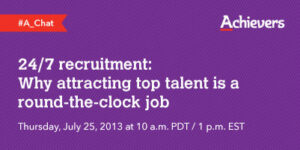
To Spark Real Employee Engagement, Choose Your HR Tech Wisely
On June 28, Paycom and I are collaborating on a webinar about engagement that everyone needs to attend. Why? Because we’re at a standstill in

On June 28, Paycom and I are collaborating on a webinar about engagement that everyone needs to attend. Why? Because we’re at a standstill in

Many companies claim that they want to be more people-centric. But how many are? Research suggests that it’s fewer than you might think. According to
There’s been a profound shift in our world, increasing the need for organizations to beef up workforce learning and development. Technology is constantly advancing itself,
We need to talk — about communication. We all know communication is key. In fact, it’s never been more important. The new World of Work
The HR industry talks a lot about analytics and data. Yet are we using data to link talent decisions to business? Not as much as
To stay competitive in 2016, your talent acquisition success will depend on a combination of effective recruitment marketing strategies, increased speed, and quality hiring processes.

The social era is creating a whole new level of opportunity for business and personal brands. Are you making the most of it?

Does talent acquisition seem like a vicious cycle at your company? For sustainable results, try an approach that integrates 3 elements

What does it take to attract top talent in today’s world of work? Save the date for a special webinar with experts from Achievers and TalentCulture!